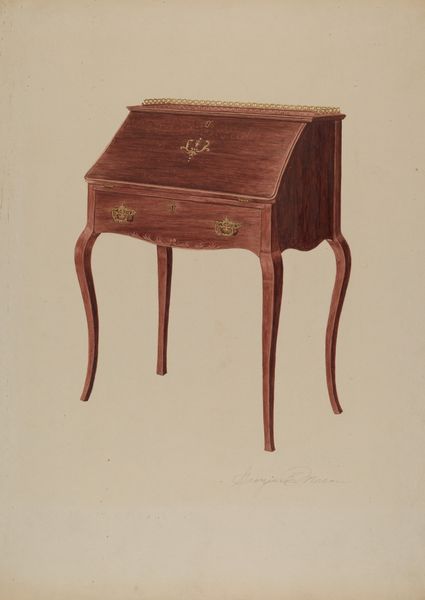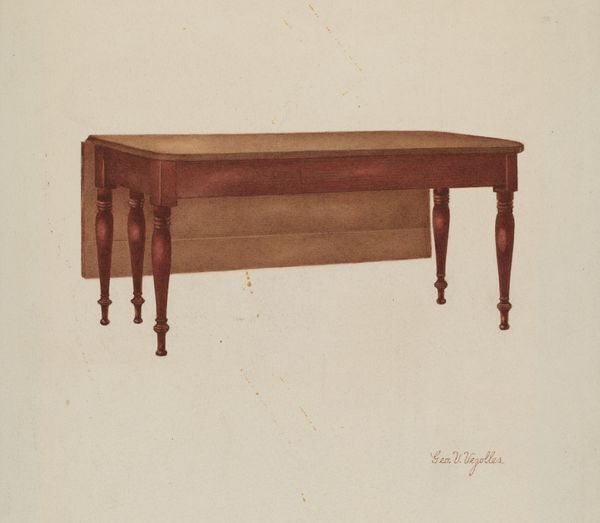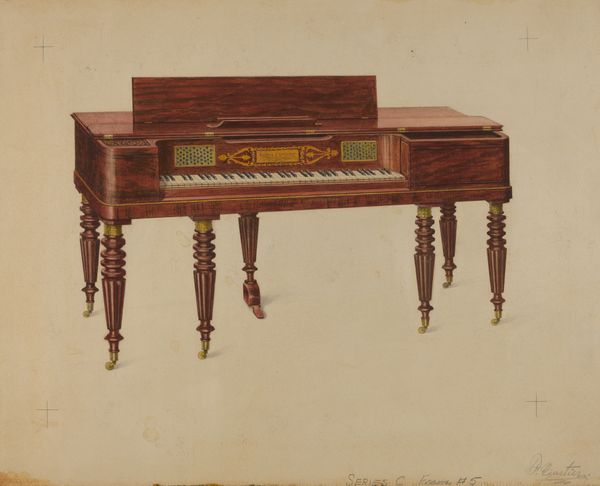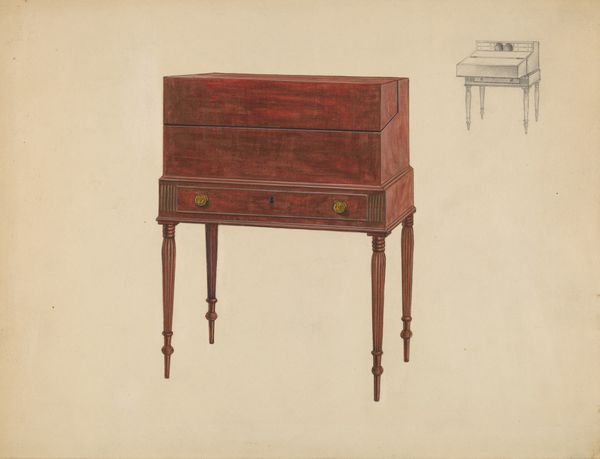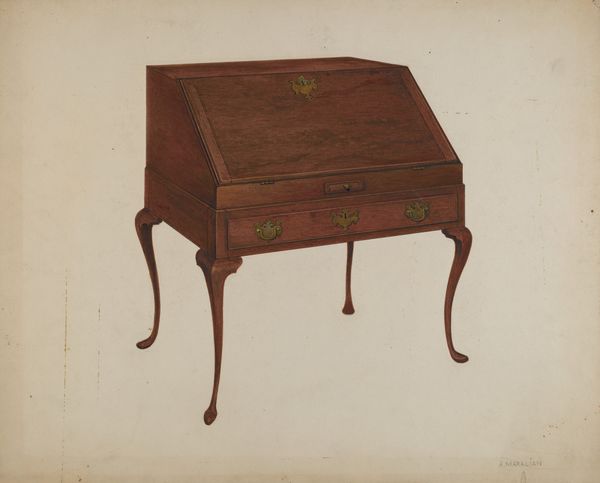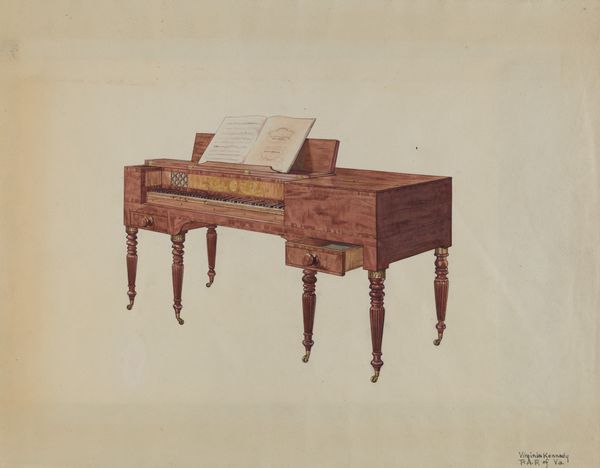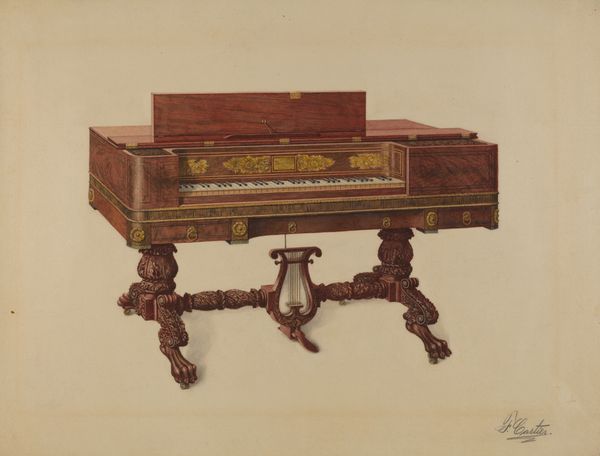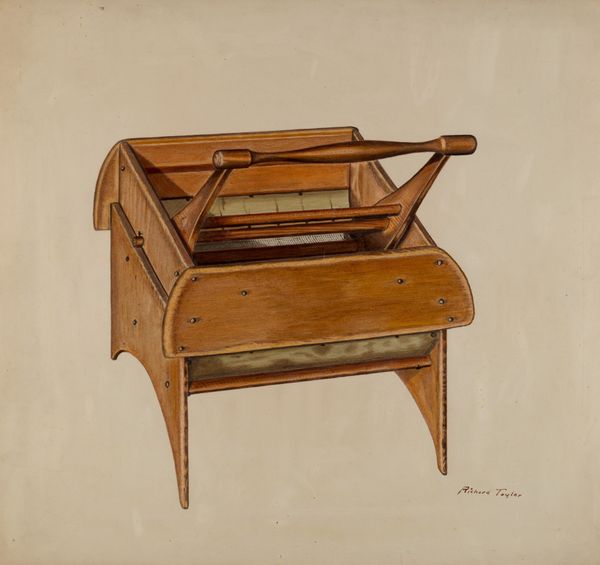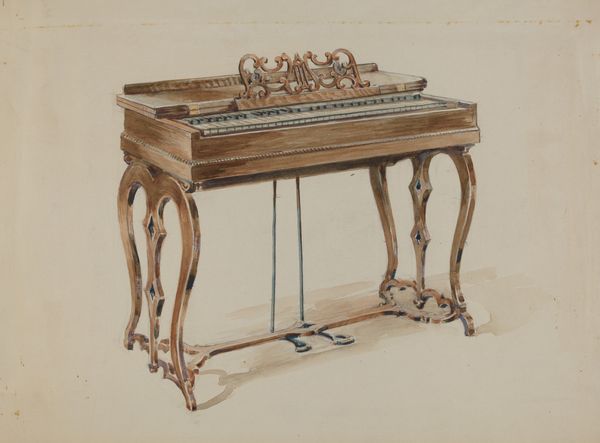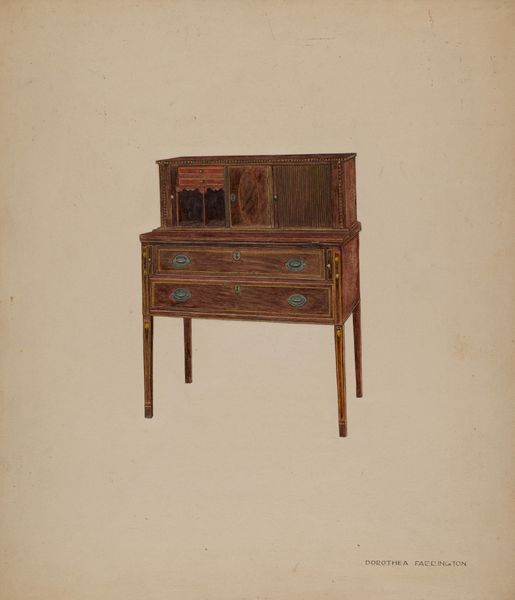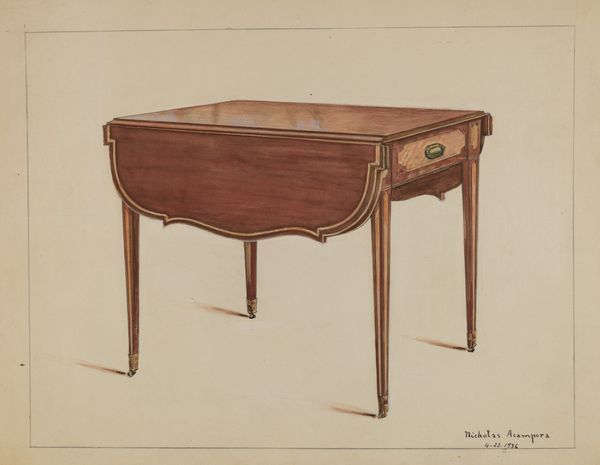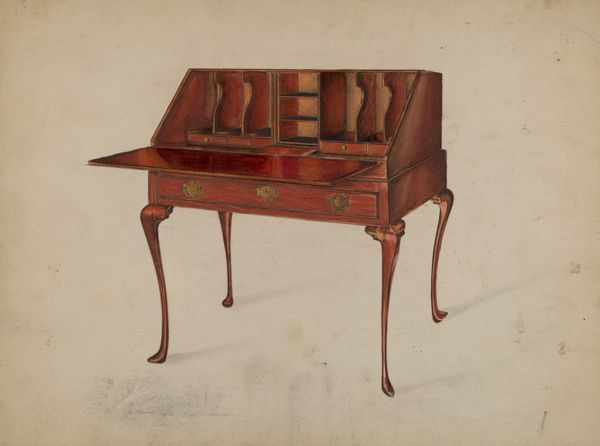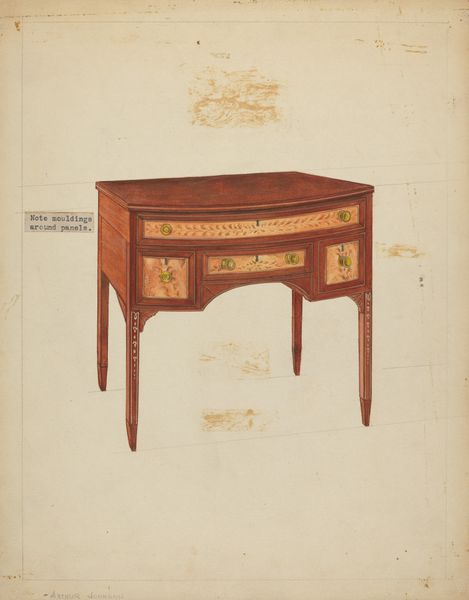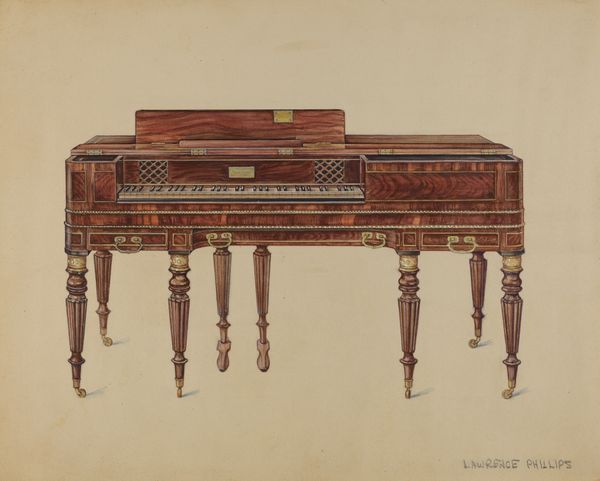
drawing, watercolor
#
drawing
#
oil painting
#
watercolor
#
watercolour illustration
#
watercolor
#
realism
Dimensions: overall: 27.9 x 35.4 cm (11 x 13 15/16 in.) Original IAD Object: Open: 44"x38 3/4"; closed: 19"x38 3/4"; 30 1/2"high
Copyright: National Gallery of Art: CC0 1.0
Curator: Well, I find this…surprisingly compelling. It’s rather modest at first glance. Editor: Yes, a deceptive stillness. There is almost something ghostly about it. Like a memory fading at the edges. We're looking at "General Cass Table" created around 1936 by Eugene Croe. It appears to be rendered primarily in watercolor and perhaps some drawing, focusing on the exquisite details of this piece of furniture. Curator: Look closely. Note the almost obsessive rendering of the wood grain. How carefully he has delineated the construction - the joins, the hinges. I want to know the factory, the maker, the conditions under which it was produced. Is that a mahogany? The artist’s choice to depict this object, elevating its materiality. Editor: Precisely. Now, "General Cass," it leads one to think about the man himself, Lewis Cass, a prominent figure in 19th-century American politics and military history. How might this table connect to narratives of power, legacy, and even domesticity within the context of the early 20th century when it was made? And, of course, who had a “General Cass” table in 1936? What statement were they making? Curator: I would argue that by painting an everyday object such as a table, the artist elevates and examines its historical meaning as more than mere utility, which subtly critiques the socio-economic landscape of the time. Look at the play of light on the polished surface. Consider the labor necessary to achieve such a finish. Editor: Right. And it’s rendered so plainly, almost clinically. There is very little adornment or unnecessary embellishment. In fact, in 1936 we’re well into the depression era: is the artist communicating the importance of simplicity and perhaps functionality as values? It seems Croe offers up a rather thoughtful meditation on objects, history and function. Curator: Ultimately, for me, the value of this work resides in how meticulously Croe used modest materials to elevate and ask questions about production, material and its role in a moment of transition. Editor: And how art can bring forgotten figures like Cass to the forefront once again, urging reflection on who we memorialize through objects.
Comments
No comments
Be the first to comment and join the conversation on the ultimate creative platform.
